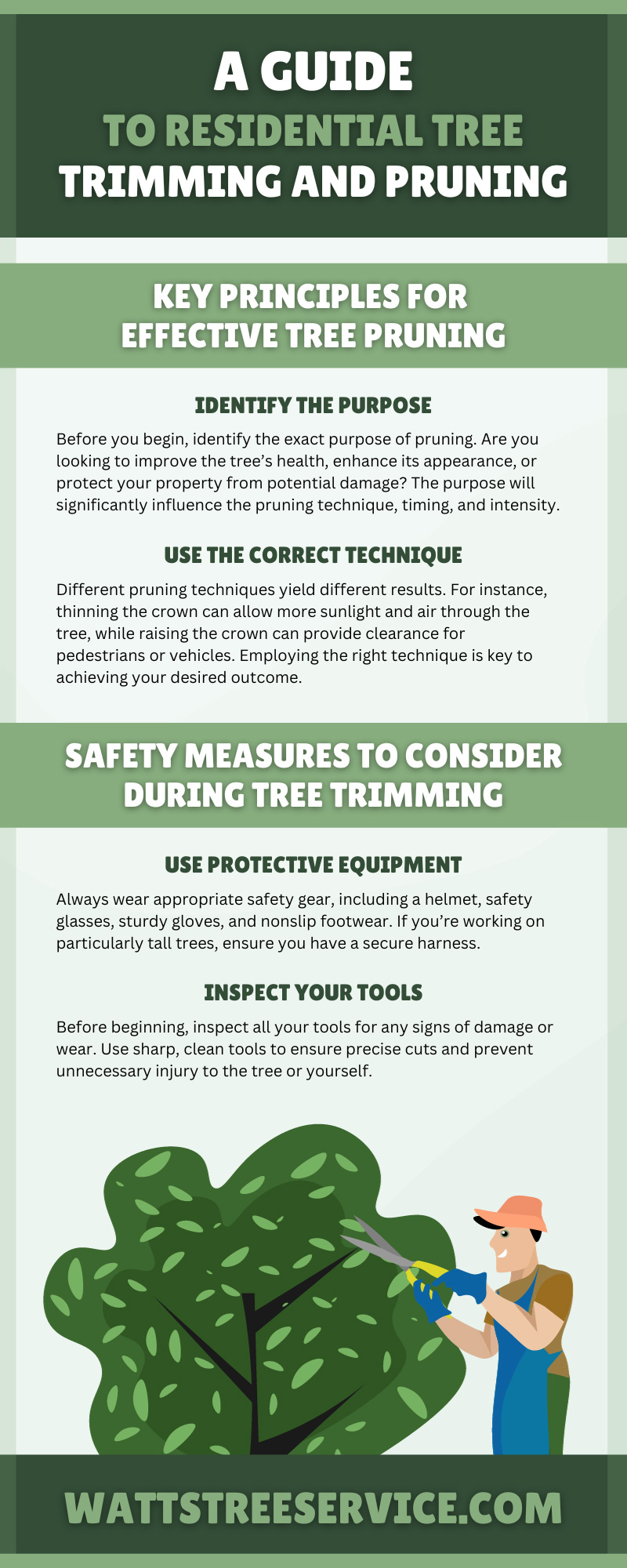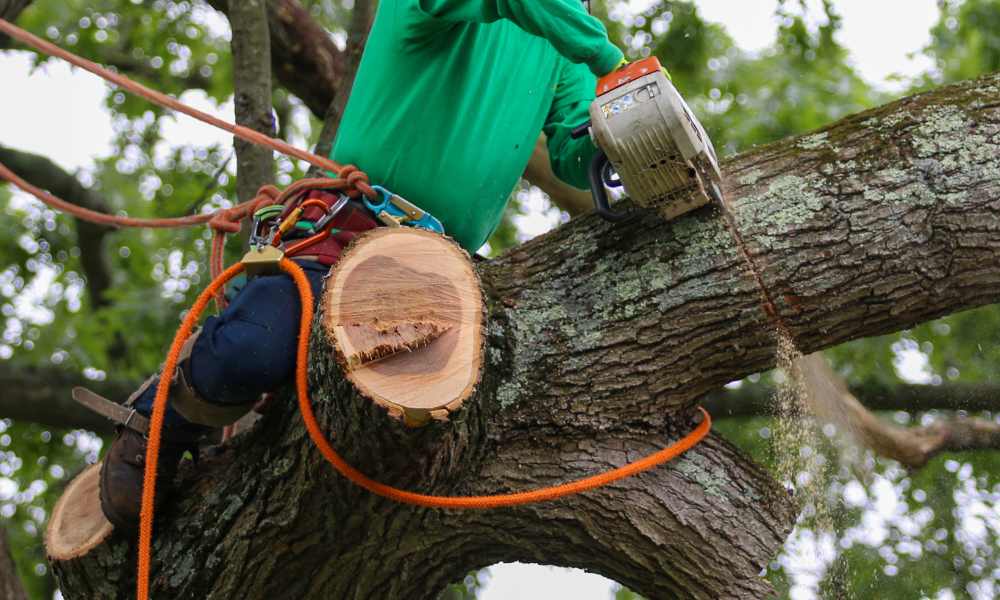For many residential properties, trees make up a solid foundation for aesthetics and functionality. However, homeowners often overlook them. The practice of tree trimming and pruning is critical to maintaining both the look and the health of your trees. And the art and science involved demand a nuanced understanding and a strategic approach, ensuring each cut offers the biggest advantage for each tree’s longevity. In this comprehensive guide to residential tree trimming and pruning, we’ll walk you through everything you need to know about these processes. We’ll equip you with the knowledge and skillset to sustain the life and beauty of your green assets.
The Importance of Tree Trimming and Pruning
Trees are much more than mere aesthetic elements in your landscape. They play a vital role in enhancing the quality of air, contributing to biodiversity, and increasing property value. But to ensure their optimal health and longevity, regular trimming and pruning are essential.
Trimming and pruning promote a tree’s health by removing dead or dying branches, which also protects your property and surrounding areas from potential damage from falling limbs. Moreover, trimming and pruning encourage the production of new, healthy growth, thereby improving the overall appearance of the tree. In the case of fruit trees, regular pruning can even increase the quality and quantity of their crop.
The Science Behind Tree Trimming
Tree trimming and pruning are not haphazard activities; they’re grounded in scientific principles that consider trees’ biology and growth patterns. Understanding this science is crucial to ensure the health and well-being of your trees.
When you prune a tree, you’re directing its growth. Strategic cuts made at certain points on the tree stimulate growth in specific directions and discourage it in others. The timing of trimming and pruning is also important. For instance, pruning during dormancy (usually in late winter) reduces sap loss and minimizes the risk of pest infestation.
Additionally, each type of tree requires a different approach to pruning. While some trees might respond well to heavy pruning, others may require a gentler touch. Because of this, having a deep understanding of your specific trees’ needs allows for more effective and beneficial care practices.
Key Principles for Effective Tree Pruning
As we’ve briefly mentioned, several key factors influence the effectiveness of your trimming and pruning efforts. Understanding the principles of effective trimming and pruning is crucial to maintaining the health of your trees. Here are some guiding concepts to keep in mind.
Identify the Purpose
Before you begin, identify the exact purpose of pruning. Are you looking to improve the tree’s health, enhance its appearance, or protect your property from potential damage? The purpose will significantly influence the pruning technique, timing, and intensity.
Use the Correct Technique
Different pruning techniques yield different results. For instance, thinning the crown can allow more sunlight and air through the tree, while raising the crown can provide clearance for pedestrians or vehicles. Employing the right technique is key to achieving your desired outcome.
Make Clean Cuts
When pruning, make clean, sharp cuts close to the trunk or branch without leaving a stub. This promotes faster healing and helps prevent the entry of pests or diseases.
Avoid Overpruning
As a rule of thumb, don’t remove more than 25 percent of a tree’s branches at once. Overpruning can cause significant stress to the tree and potentially lead to its decline.
Safety Measures To Consider During Tree Trimming
While you go about pruning and trimming, you should know how to keep yourself safe. Here are some key safety measures to consider:
Use Protective Equipment
Always wear appropriate safety gear, including a helmet, safety glasses, sturdy gloves, and nonslip footwear. If you’re working on particularly tall trees, ensure you have a secure harness.
Inspect Your Tools
Before beginning, inspect all your tools for any signs of damage or wear. Use sharp, clean tools to ensure precise cuts and prevent unnecessary injury to the tree or yourself.
Check the Surroundings
Be aware of your surroundings. Look out for overhead power lines, nearby buildings, and other obstacles. Always make sure people and pets are at a safe distance before you start trimming.
Avoid Working in Inclement Weather
High winds, rain, or lightning can make tree trimming dangerous. Postpone your work until conditions improve.
Know Your Limits
If the tree is large or the task seems too complex, hire professionals. They have the knowledge, experience, and equipment to safely handle the job.
Identifying When Your Tree Needs Trimming or Pruning
We also want to take the time in this guide to residential tree trimming and pruning to talk about some signs your trees require maintenance. Knowing when to trim or prune your trees is as important as knowing how to do it. Here are some indicators that your tree may require attention:
- Dead or loose branches: These are easy to identify, as they lack leaves in the growing season or show signs of decay.
- Diseased or infested branches: Look for signs of disease or infestation, such as discolored leaves, unusual growths, or insect activity.
- Crossing or rubbing branches: Branches can grow in ways that cause them to rub against each other, leading to damaged bark and creating entry points for pests or diseases.
- Overgrowth: If the tree’s size is obstructing views or posing a safety concern (such as by interfering with power lines), it may be time for pruning to manage its growth.
- Poor tree shape: Irregular or lopsided growth can indicate that your tree needs pruning to restore its balance and aesthetics.
The Role of Professionals in Residential Tree Trimming
While many homeowners take on the task of tree trimming and pruning themselves, the expertise and skills of professionals can be invaluable in certain situations.
Professional arborists possess comprehensive knowledge about the biology, growth patterns, and care requirements of various tree species. They understand how, when, and where to make cuts that will promote healthy growth and prevent disease.
Professionals are also equipped with specialized tools and safety equipment to handle complex or risky tasks, such as trimming large trees, dealing with diseased trees, or working near power lines. They’re specifically trained to work at great heights as well, ensuring safety while providing the best care for your trees.
Watts Tree Service provides an array of residential tree services, ranging from trimming to removal, and we have over a decade of experience yielding quality results for our clients. We continuously invest in high-quality gear and employ ISA-certified arborists to ensure our work meets expectations every time. We’re here to simplify your tree care needs, guide you through the complexities of tree health, and help you reclaim your property space. Contact us today to learn more.

Last modified: April 25, 2025

